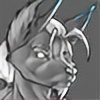HOME | DD
 TamberElla — How to ask for professional feedback
TamberElla — How to ask for professional feedback
Published: 2018-03-11 23:49:08 +0000 UTC; Views: 6090; Favourites: 124; Downloads: 0
Redirect to original
Description
This is a blog post I made recently that I thought I would repost here.I have gotten a couple of questions recently about the best way to go about getting feedback from professionals. Here are some tips I have gathered.
Remember: you may not (and likely will not) get a reply every time. Many artists are very busy and are swamped with requests for feedback. Please go into this process without expectation and do not feel like it’s a personal failure if you don’t get responses right away.
Overall; show that you are putting effort and care into your request for feedback. Show that you are serious, professional, and polite. Remember that a lack of reply isn’t personal. Hone in on the specific information you need as you go along.
Related content
Comments: 8

Thank you so much
Normally if I want some feedback on my art I either post a journal or add the critique option on said deviation.
I have never personally emailed a more advanced artist than myself ad I know they are very busy people and I fear that I will just bother them
I' kinda shy on this as well tbh....
But if anyone wants feedback from me they are welcome to ask
I love to give tips etc to others when they need some help on how to do this or that etc... it makes me feel happy that I have been able to help them in some way 
👍: 0 ⏩: 0

a Huge thank you for your enlightened words, your article's just coming at the right time for me
Most important, it's been a year maybe less that' I follow you and I must admit you're quite an amazing artist.
I whish you the best as an illustrator.
Animals power for ever !
Julien M.
👍: 0 ⏩: 0

I just got an email batch of questions where the last two asked me "Can you critic my work?" to be followed immediately by "Here are two of my drawings tell me which is better." Not my favorite feedback request.
👍: 0 ⏩: 0

This is quite useful. I rarely ever ask for feedback, but this is definitely handy to refer to when approaching the professionals. I'm usually never sure when I'm asking the right questions, so I largely refrain from asking.
👍: 0 ⏩: 0

Only time I ask for feedback is if the person puts up a request for people to do so. I guess I'm just too shy to do it otherwise, afraid to bother them.
Hibbary did once on her Patreon, even for those on the lower end (I don't have the best income, so you and Hibbary are the only two I support at the moment 
I think feedback is part of her higher tires on Patreon (not certain though), but this one time she opened it for all. And I got a very good feedback on my then most recent painting. I'm still planing on going back and do all the changes she suggested. They were all proper good feedback that kept my unique style, more how to make it more natural in light and colour so I can continue of what I have rather than how to do it better from scratch
👍: 0 ⏩: 0




